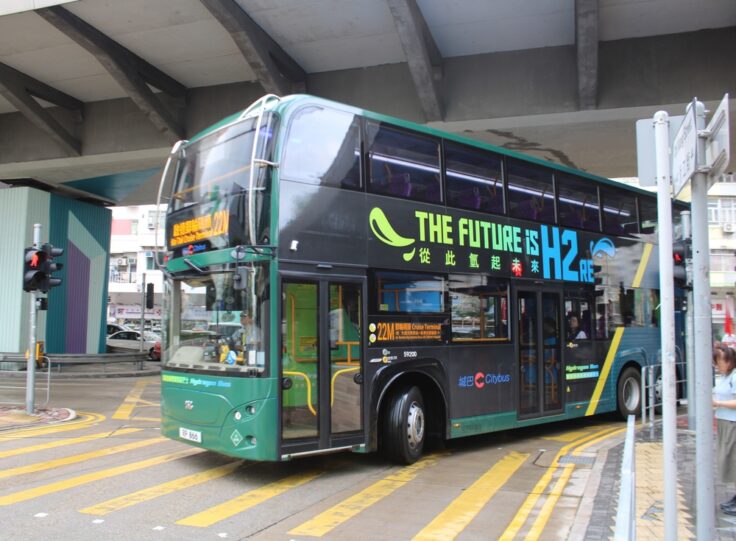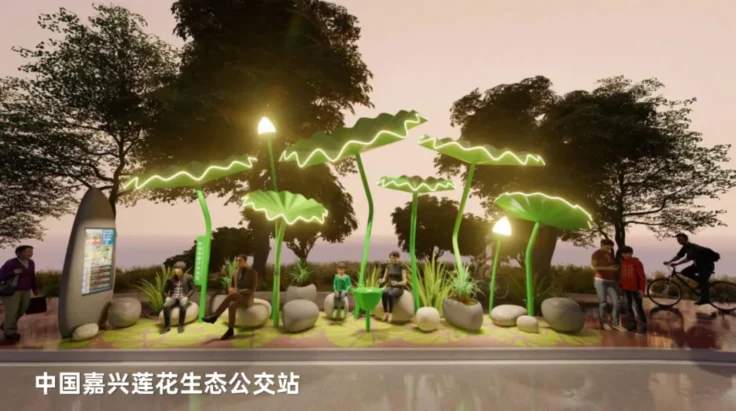August 28, 2024
In China, Public Transport Can Be at the Forefront of Energy Innovation
To reduce emissions from China’s transport sector, one of the world’s largest emitters and economies, sustained innovation and transformation is needed in the way people move and consume energy.
ITDP China’s Daizong Liu presented the points in this piece at an international transport expo in Guangzhou. Access the article in Chinese.
In recent years, China has introduced a series of policies and investments aimed at decarbonizing its transport industry across major cities, but overall, the industry is still lagging in its ability to effectively reduce emissions and mitigate pollution within its own national targets. By 2060, the target year for China’s carbon neutrality, the nation’s transport system may very well become one of the largest sources of energy-related emissions at its current growth rate.
The reduction of emissions from private motor vehicles is a priority for the country’s mobility industry, and this starts with encouraging more ridership of public transport so that people take fewer car trips overall. To promote a larger cultural shift towards public transport will require, among many other strategies, that the country’s sector embraces new energy vehicles (electric, hybrid, and fuel-cell powered) as well as related technologies that move away from harmful and costly fossil fuel usage. China’s public transport systems need to seize the burgeoning opportunity to integrate with new energy innovations in order to meet climate targets while promoting both ridership and economic development.

Learn more about why this is ITDP’s year of the bus.
Public transport is uniquely suited for rapid integration with new energy systems in China’s cities. China already has several large new energy companies focused on the development and manufacturing of batteries, vehicles, and infrastructure with market values of trillions of yuan (such as CATL and BYD), underpinning a huge new sector in nation’s mobility field. This industry was, in fact, propelled by the public transport field and its interest in cleaner vehicles, which sparked growth in industrial demand and became an engine for research and development in the area.
There are several strategic opportunities for uniting public transport with new energy vehicles that could promote development and interest in both areas. For example, hydrogen-powered buses are a key focus of the new energy industry in China. The application of hydrogen energy in the transport field, especially with buses, is a promising new direction that warrants more research and exploration. Some leading Chinese companies have achieved considerable results in the field as of late. For example, Hong Kong’s Citybus has already pledged to build a zero-emission bus fleet by 2045 with a ratio of 7:3 between hydrogen energy and electric buses.


Bus stations and shelters are also an underused resource that can be leveraged for clean energy generation, enhancing both the rider experience and operations. With the rapid advancement of battery technology, bus stations can now use photovoltaic and solar to form a self-sufficient generation and storage system for power for vehicles. In cities such as Jinan and Chongqing, China, electricity can already be self-generated through some innovative station designs, with surplus power being sent back to the grid for wider use. A design-forward solar bus station in Tilburg, Netherlands not only engages and excites passengers but also uses solar energy to generate additional power. Similarly, the lotus leaf bus station proposal in Jiaxing, China has a unique, culturally-relevant look that also employs photovoltaic power generation.
Retired bus batteries can also be repurposed as energy storage to provide additional support and revenue to public transport systems. For example, a cascade battery energy storage system in the Yanling area of Guangzhou uses the batteries of retired buses to reduce costs and increase efficiency. V2G (Vehicle-to-Grid) technology is an additional area worthy of more attention. With it, buses can be charged at night and discharged during the day to provide further support for the power grid. This technology has great significance for public transport systems that operate around the clock. V2G technology has been applied in many bus stations globally, including some stations in the UK, US, and in Chinese cities like Wuxi.
There are also a number of possibilities for united new energy technologies with the streets and roads themselves. Countries like Sweden are already exploring the development of wireless charging roads that remove range anxiety and help ensure reliable service. The city of Wenzhou, China has also launched a road proposal that uses piezoelectric power generation to support roadside transport infrastructure through this unique application. A few years ago, the city of Jinan also debuted a landmark ‘solar highway’ fitted with 5,875 sq/m of panels capable of generating up to 1GWh annually and charging electric vehicles in motion. Elsewhere, in Bogotá, Colombia, the city has even been piloting vertical wind turbines in the middle of roads to utilize the airflow from passing traffic to generate power.

With this wave of new energy technologies and an urgent need for sustainable mobility options, the public transport sector in China is at an inflection point. This moment of transformation comes with as many challenges as opportunities, but the country has a significant chance to break with outdated frameworks, actively engage the new energy industry, and create a public transport model for the world.
